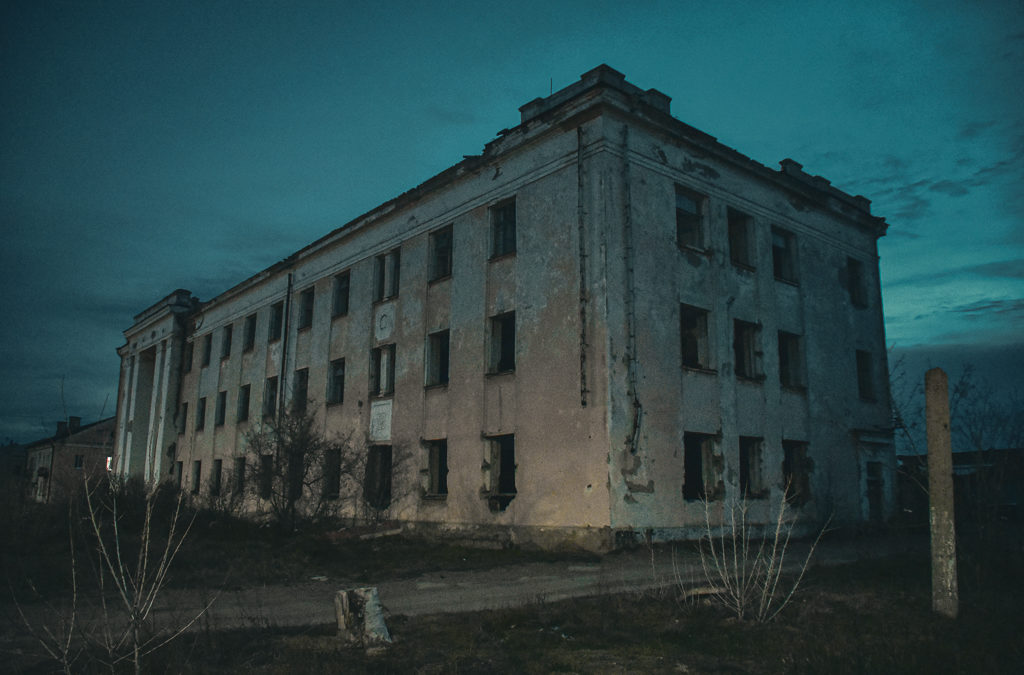November 2023: I traveled to Northeast Kazakhstan for one week to feed my longing for all things of the Soviet Union era, which Kazakhstan was formerly a part of. I have a fascination for the cold war, its war of ideology, espionage, brutalist architecture and the constant threat of nuclear annihilation that world lived under for decades. If the Soviet Union had not of acquired nuclear weapons, there likely would not have been a cold war. But the Soviets did acquire them and the region of the world where they developed and tested them was in the desolate steppes of northeast Kazakhstan in a vast area called the Semipalatinsk Test Site or polygon named after its geometric shape.
The goal of my 2nd visit to Kazakhstan was to visit the polygon nuclear testing grounds and the once clandestine region around it to learn more about this ugly chapter of human history where governments sacrificed large swathes of land and people to achieve weapons capable of destroying the world many times over. Because of these weapons the Soviet Union and USA never fought each other directly but instead via proxies in wars that still shape the world today such as in Vietnam, the Koreas, in Africa, and ……that cost millions of people their lives.
About the Polygon
The Polygon, an 18000 square foot area of flat steppe lands, was the primary nuclear testing site for the Soviets and once the Soviets acquired the technology likely from the USA via espionage 450 nuclear atomic and hydrogen bombs were detonated here between 1949 and 1989 until the fall of the Soviet Union. This part of Kazakhstan was one of the most closed of places of the world for decades and was heavily guarded by KGB spies. Only when the Soviet Union collapsed did the region finally become accessible to the outside world and the damage from the radiation to land and people become known to the world. Fallout from the testing exposed thousands of people and animals to radiation people living within hundreds of miles of the test site till this day experience high levels of cancer and birth defects. Local villages severely impacted by the radiation with mutated DNA have even developed a subculture and pride in their mutations and consider the radiation poisoned food and water to be necessary to their way of life.
Relics of the cold war are everywhere. Bunkers and testing buildings are left in the polygon and just outside of the polygon is the key nuclear research center of Kurchatov, where nuclear scientists that developed the testing program lived and were heavily guarded by the KGB. Kurchatov is dotted with abandoned cold war era buildings.
The polygon like Chernobyl is one of the most radiation contaminated areas of the world but unlike Chernobyl that was contaminated by accident the polygon was done so intentionally via testing. To this day, scientists use the area to study the ongoing effects of radiation on people and animals. Although radiation levels are high in some areas, visiting the polygon is considered to be safe as long as exposure is limited by having a short stay, efforts are made to prevent exposure by not touching the ground, eating or drinking and by trying to avoid contact with dust. Some of the core areasof the polygon previously accessible are off limits now because of the higher levels of radiation there.

Polygon highlighted in orange
Ist Visit to Kazakhstan in Almaty in 2012
During my first visit to Kazakhstan in May 2012, I had to obtain a visa in Washington DC. Now over 10 years later travel to Kazakhstan was visa free for Americans. During my previous visit, I traveled independently via public bus overland from Bishkek, Kyrgyzstan to Almaty, the old capital of Kazakhstan before the capitol was changed to Astana. I walked the city of Almaty on foot and spent two days there visiting Soviet monuments and trying to get a feel of the city, which I discovered is completely different than Astana in geography and architecture.
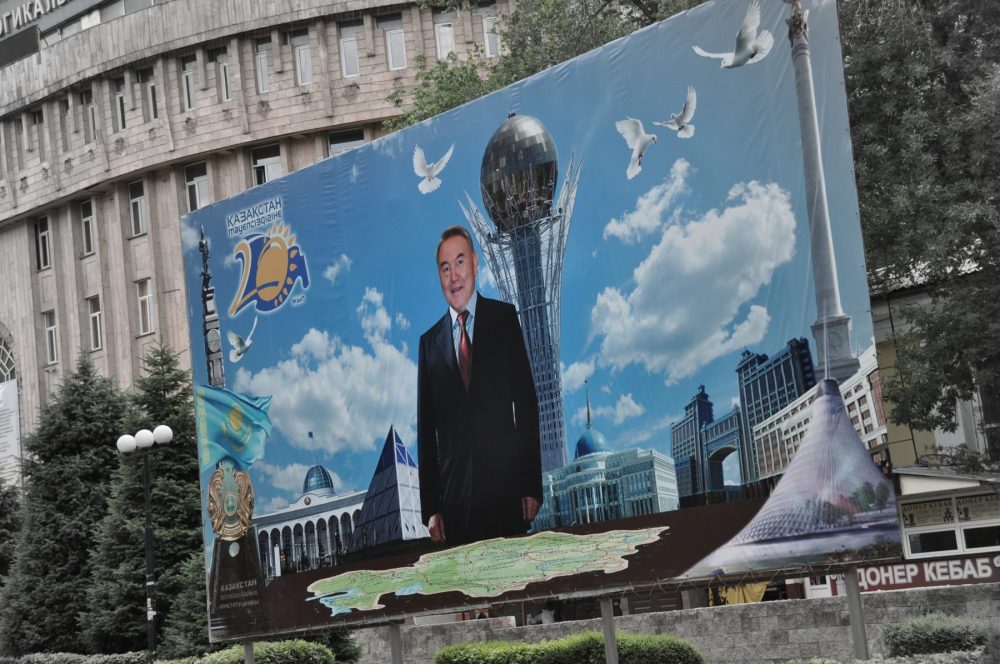
President, Nursultan Abishuly Nazarbayev
In 2012 Kazakhstan was ruled by the president, Nursultan Abishuly Nazarbayev, a Soviet era strong man, who became one of the world’s longest lasting dictators, who ruled for 30 years until a revolution fueled largely by the growing gap between the rich and poor and lack of trickle-down wealth from all of Kazakhstan’s oil, natural gas and mining succeeded in overthrowing him from power in 2022. When I was in Almaty, murals of Nazarbayev were commonplace and obvious indicators of wealth were on display side by side with poverty everywhere.

Stretch Limo Humvee
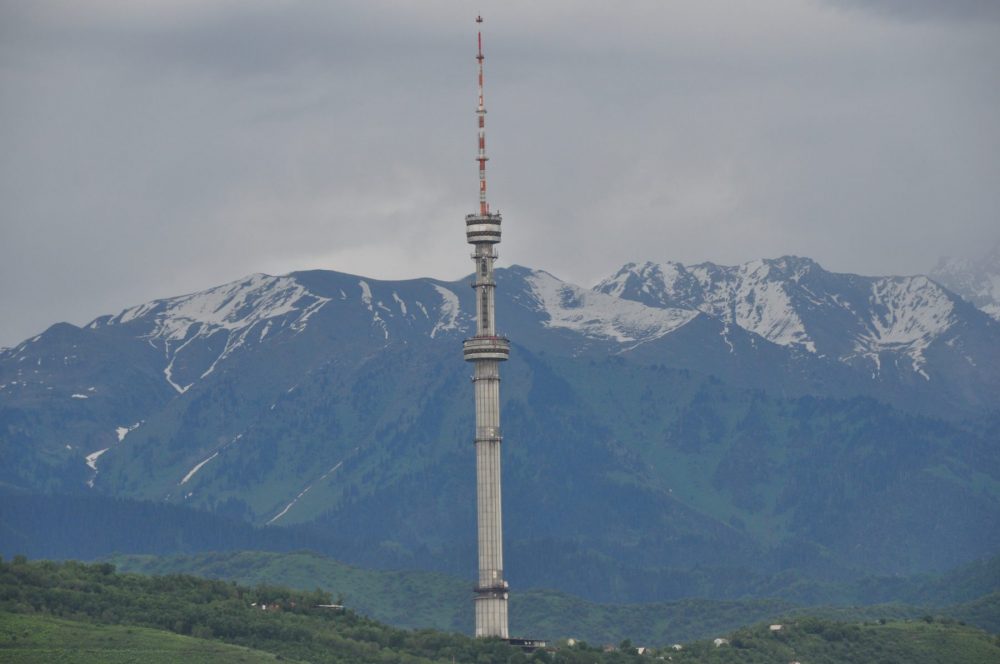
TV Tower from Soviet era

Kazakh wedding at a World War II Soviet Monument, one of the coolest monuments I have ever seen
Astana and Polygon in 2023
November 2023: On the most recent trip to visit the polygon, I first flew into Astana with my friends Richard, Wes and Frank, the new capital of Kazakhstan because Astana is the closest city to the polygon. Astana became the capitol in the 90s and on the most part the cities newly constructed with ultra-modern over the op extravagant architecture. Astana was originally named Nur-Sultan in honor of the long-ruling President Nazarbayev but as a result of the protests to overthrow him in 2022, it was named Astana instead. Ultramodern cities are not usually interesting to me but the grandness of Astana rising from the nothing ness of the frozen Kazakh steppe, was fascinating and my friends and I walked for miles exploring the city. The highlight was the science museum in a giant sphere made of pure glass that rises hundreds of feet high and showcases the various sciences of energy and the universe in spectacular displays of technological wonder. This was easily the finest science museum I have ever stepped foot in.

Astana Monuments
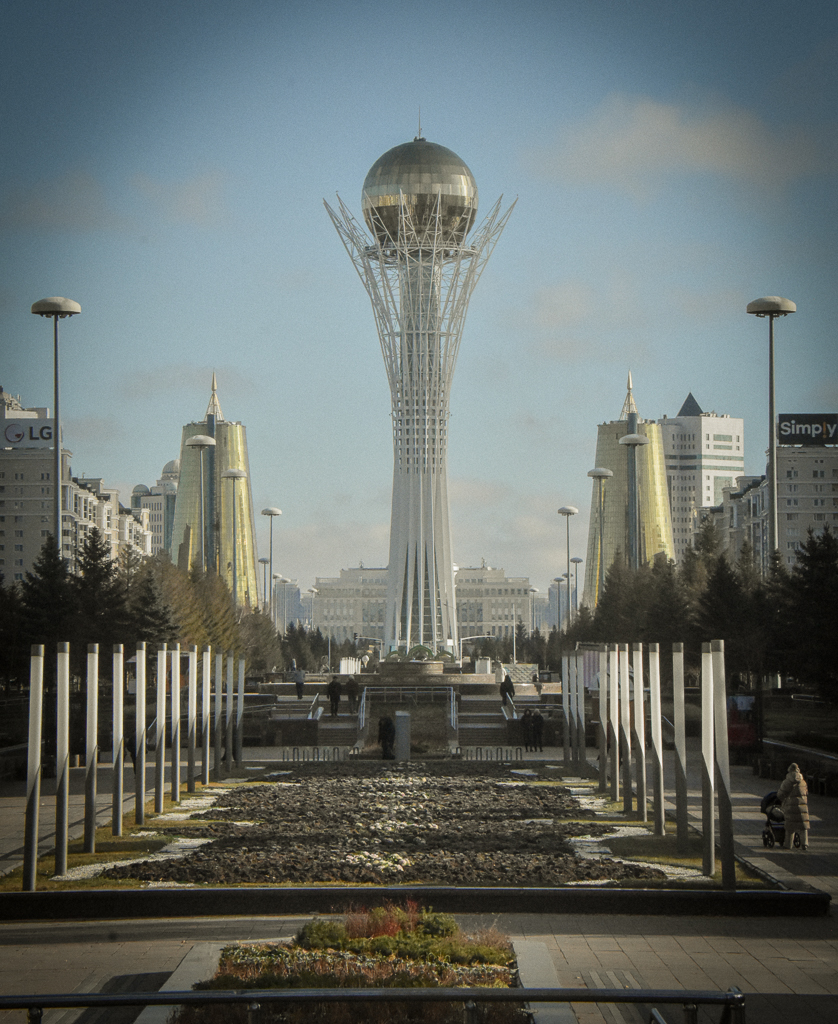
Astana Monuments
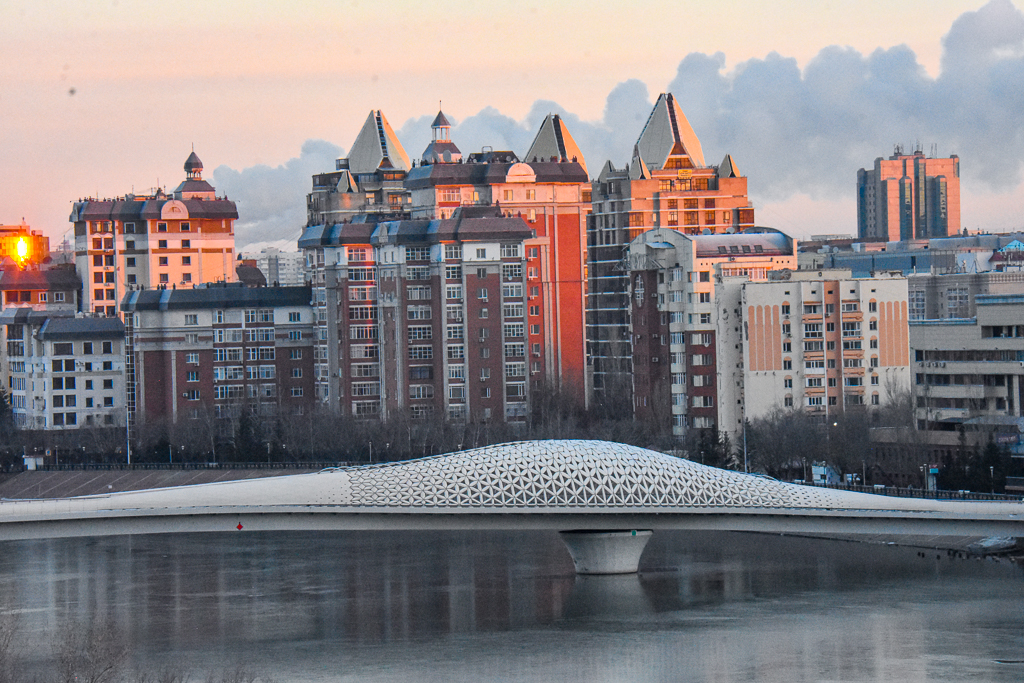
Astana Bridge
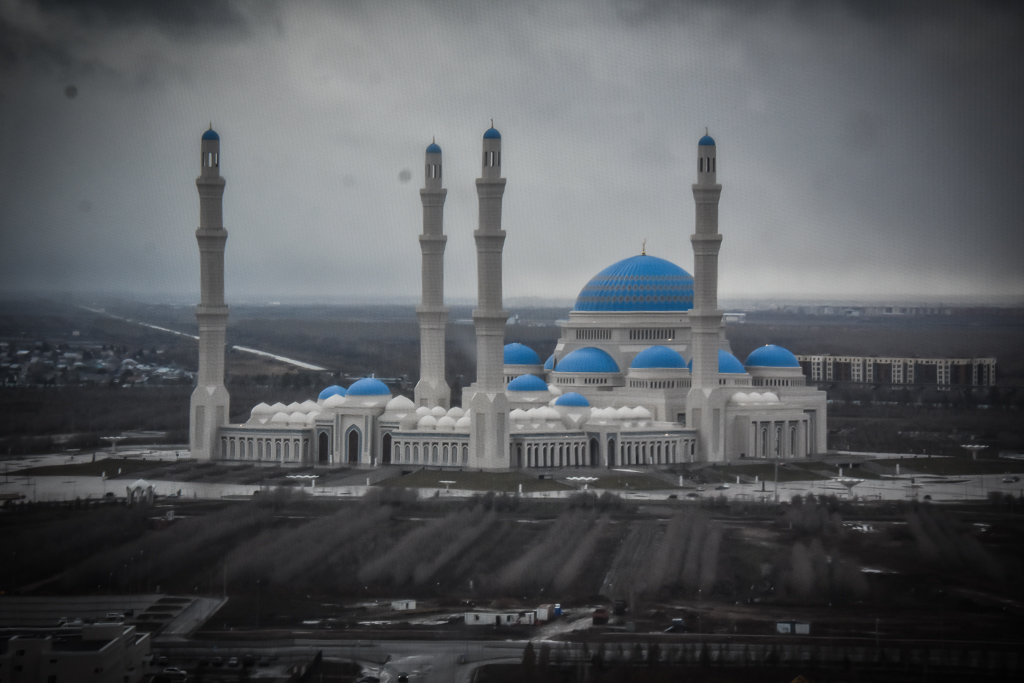
Largest mosque in Astana
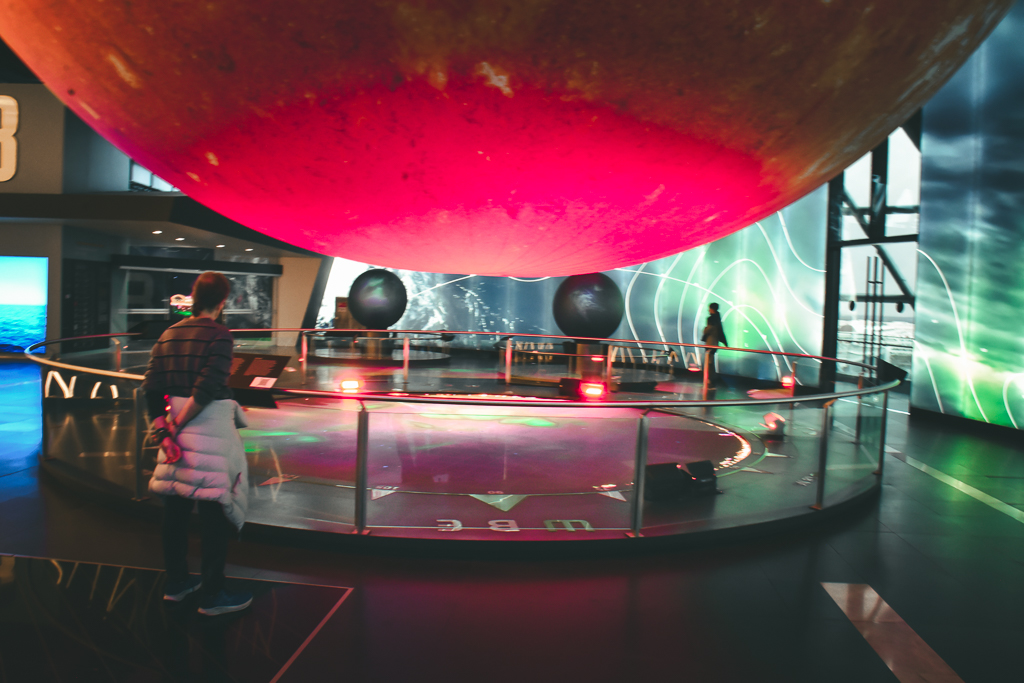
Pavilion and Science Museum

Pavilion and Science Museum
My friend Richard was kind of enough to book all of us in rooms at the 5Star hotel-St Regis located on the river front in Astana. The hotel was truly luxurious and at times I found it hard to leave the comfort of my room to explore the city.
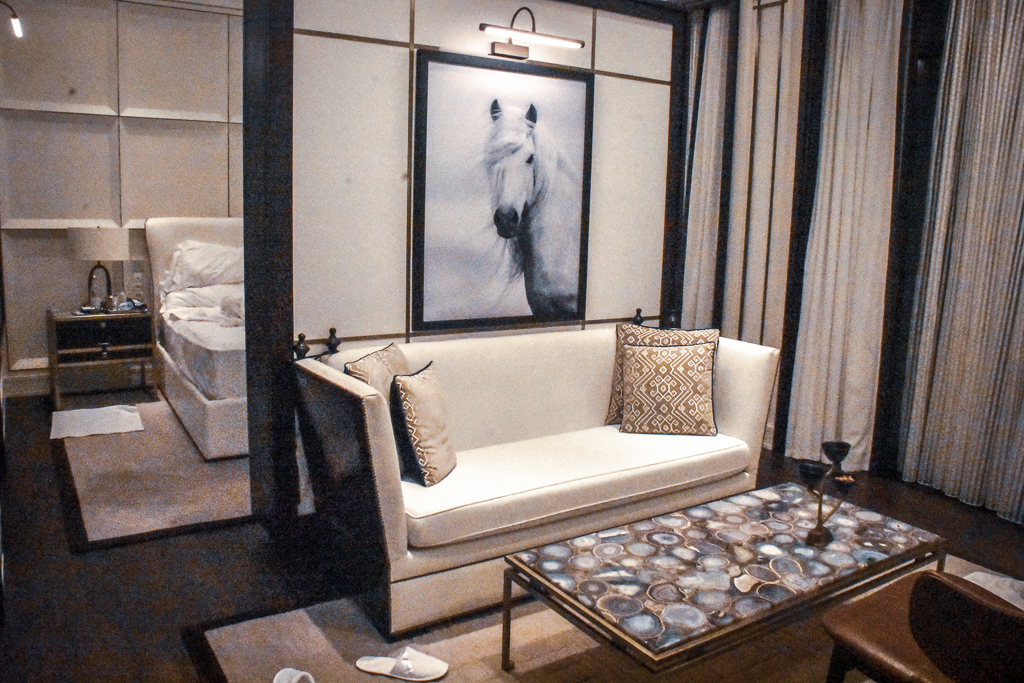
My Hotel-St Regis with a proud Portrait of a Kazakh Horse
Across the Steppe
To reach the polygon, I hired a 4wheel drive vehicle, driver and guide and from Astana we drove all day across the flat plains or steppe to Semipalatinsk. The bleakness of the windswept freezing steppe that easily reached 10 degrees F at times reminded me of traveling across western North Dakota or eastern Montana in winter. There were no permits needed in advance to visit the Polygon. Only a heads up that we were coming and since we would end up seeing no officials anywhere in the polygon, I doubt this was even necessary. The core regions of the polygon are off-limits however due to high radiation levels and supposedly there are local officials and maybe even drones patrolling these areas but after seeing locals fishing in the radioactive lake and mining trucks going in and out of the polygon, I doubt anyone would care where you go in the polygon or at least there isn’t anyone there to stop you.
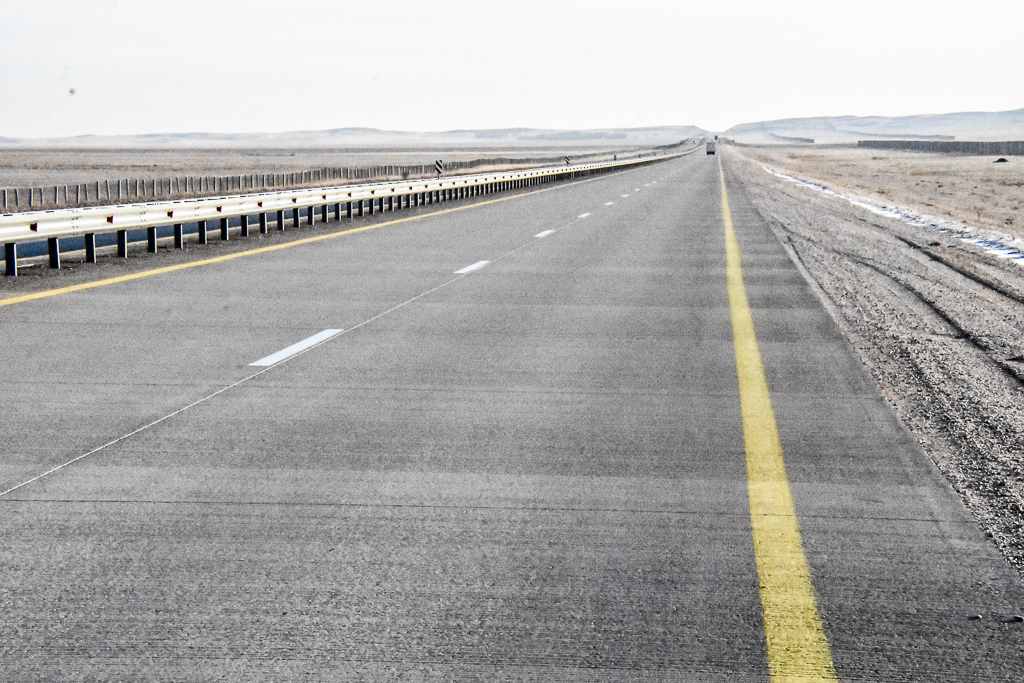
Endless highway across the steppe
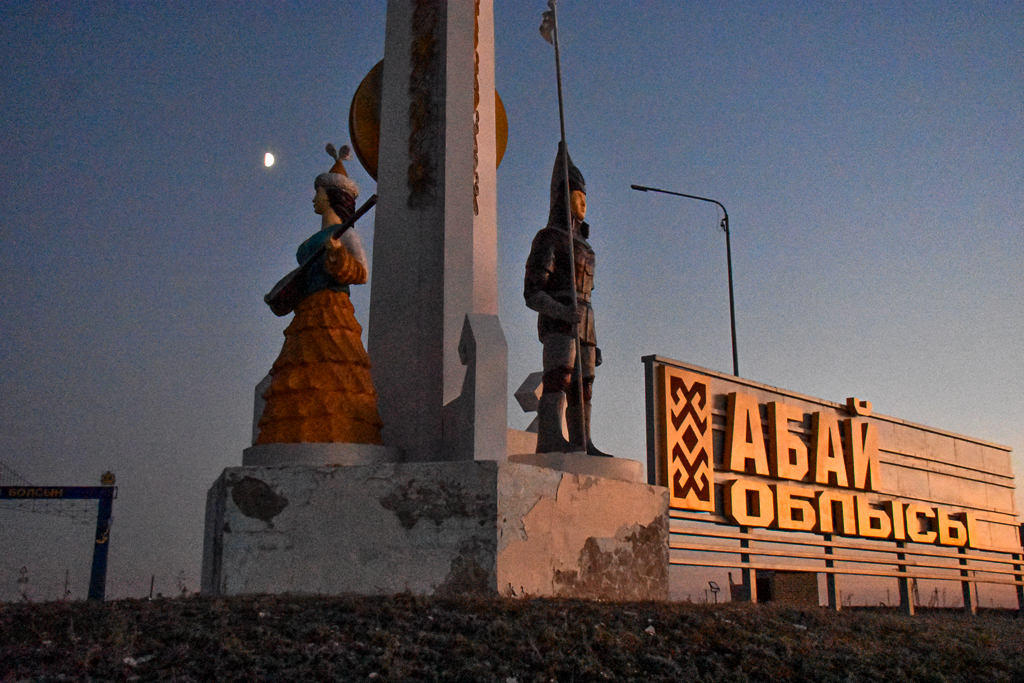
Monuments marking entrance to various villages in eastern kazakhstan
Kazakhstan is a country with an economy that relies on mining, oil, gas and coal. Huge factories that emit tons of raw pollution into the air are commonplace even in the middle of nowhere and whole villages of apartment buildings are built in rural towns to support the labor for them.
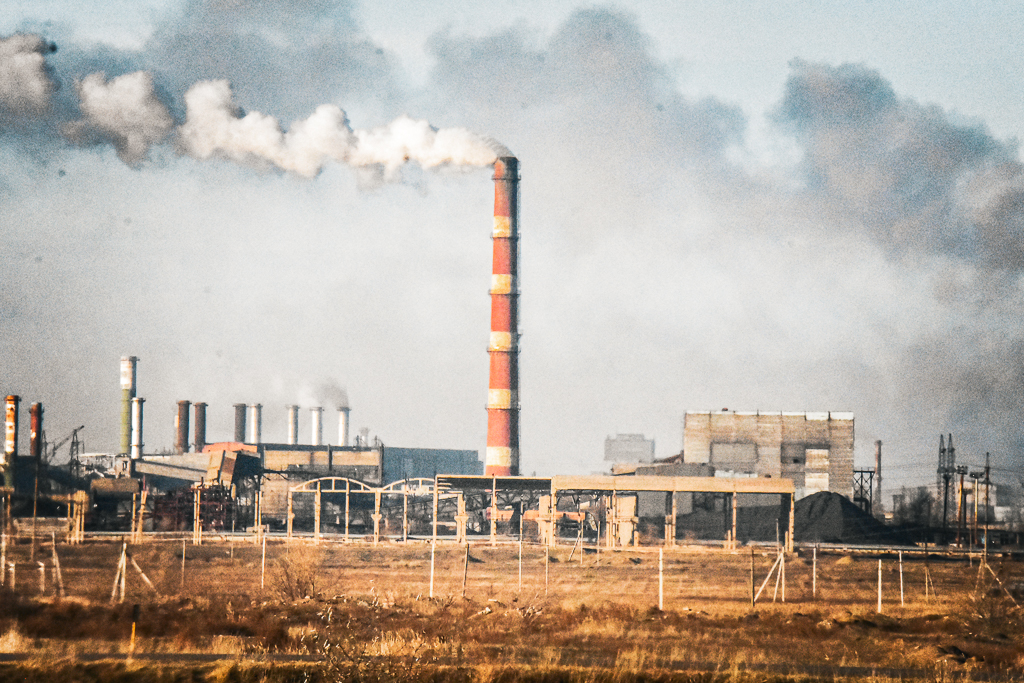
Typical factory in countryside
The stretches of highway in the steppe were long and grueling and occasionally we would stop at roadside mom and pop run cafes and have a bite to eat along with other travelers and truck drivers carrying their goods to Russia. Kazakhs aren’t used to seeing foreigners in this area and were curious but unable to say much to us given the language barrier.
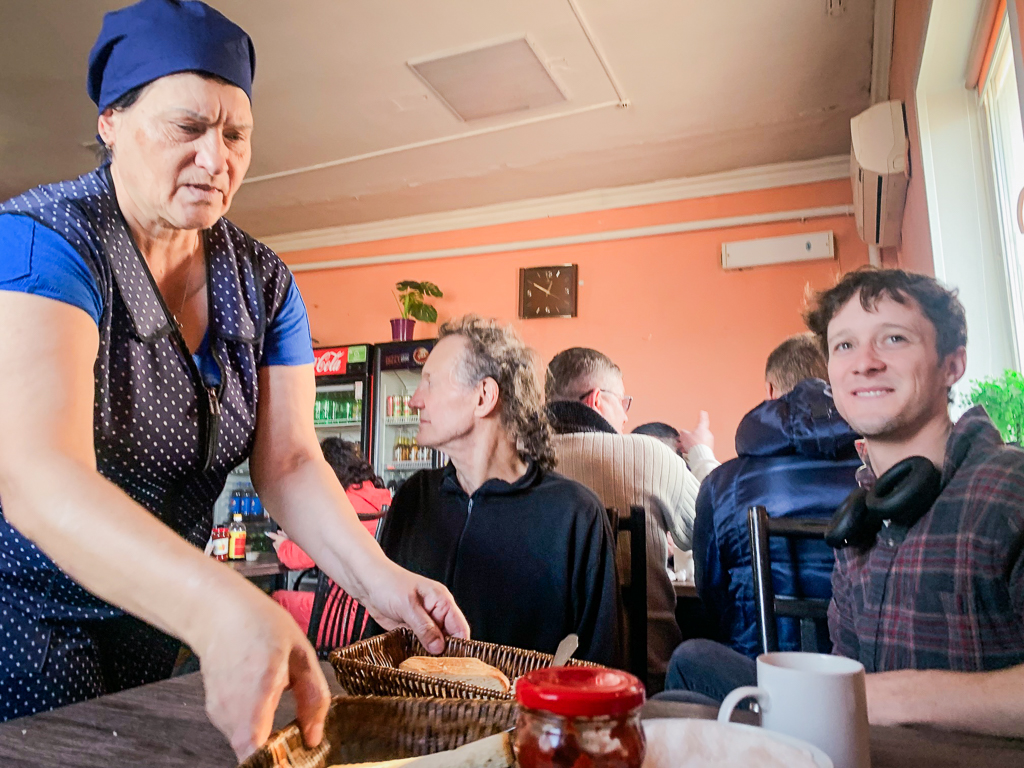
Roadside Cafe
I can never resist having a photo of a good Soviet monument especially a statue of Lenin. This town had a large collection of them located inside a park.

Me and Lenin
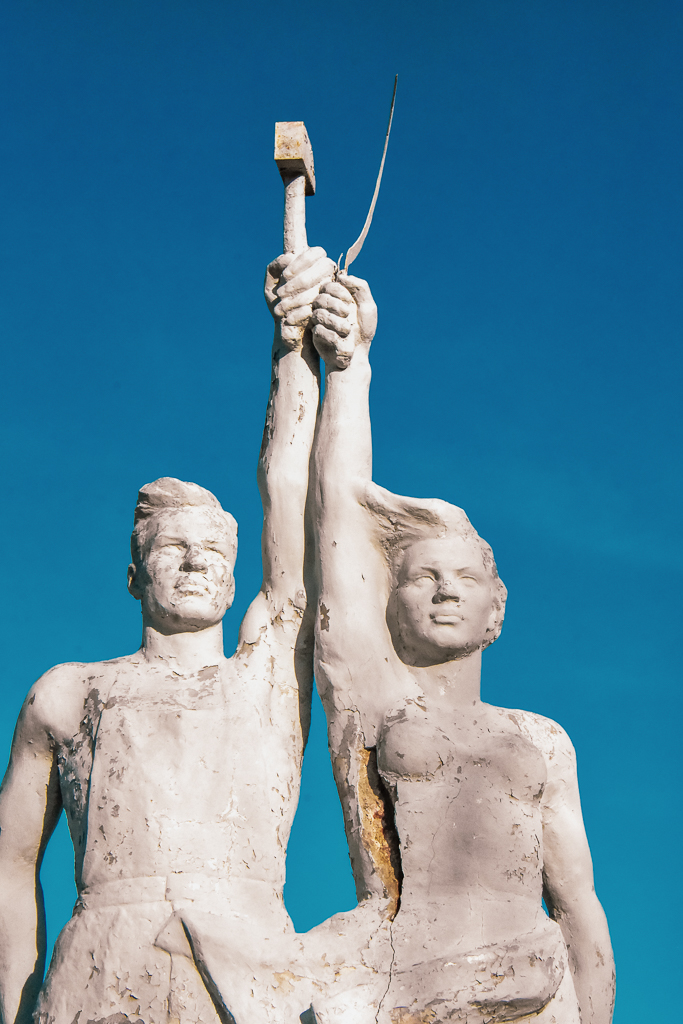
Soviet era statue
Semipalatinsk
We drove all the way to Semipalatinsk, the largest city in the region, once a Russian trading post in the wilderness along the only river that runs through this part of Kazakhstan. The majority of people that would eventually live in this area were prisoners or citizens being deported as punishment for political reasons. We spent the night in a small Soviet era hotel that overlooked a factory that doubled as a night club called the mafia Club. We visited some of the local eateries and old 100-year-old abandoned brick building once a school for girls as well as monuments erected in honor of the civilians that suffered from the radiation fall out of the nuclear testing that affected the city and beyond.
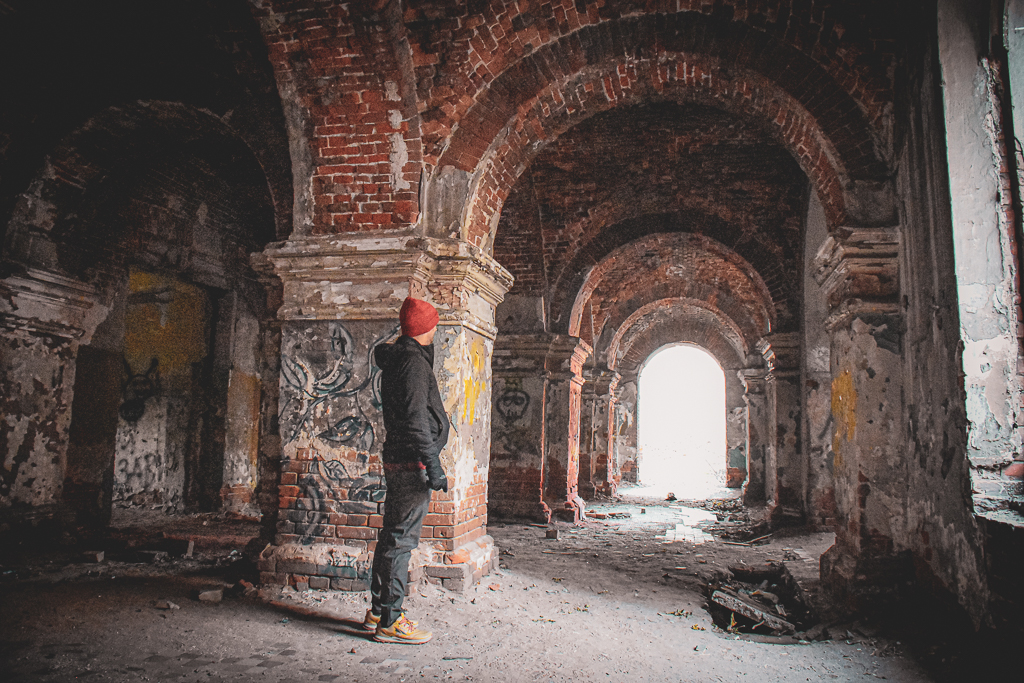
Exploring an old ruined brick building

Factory/nightclub
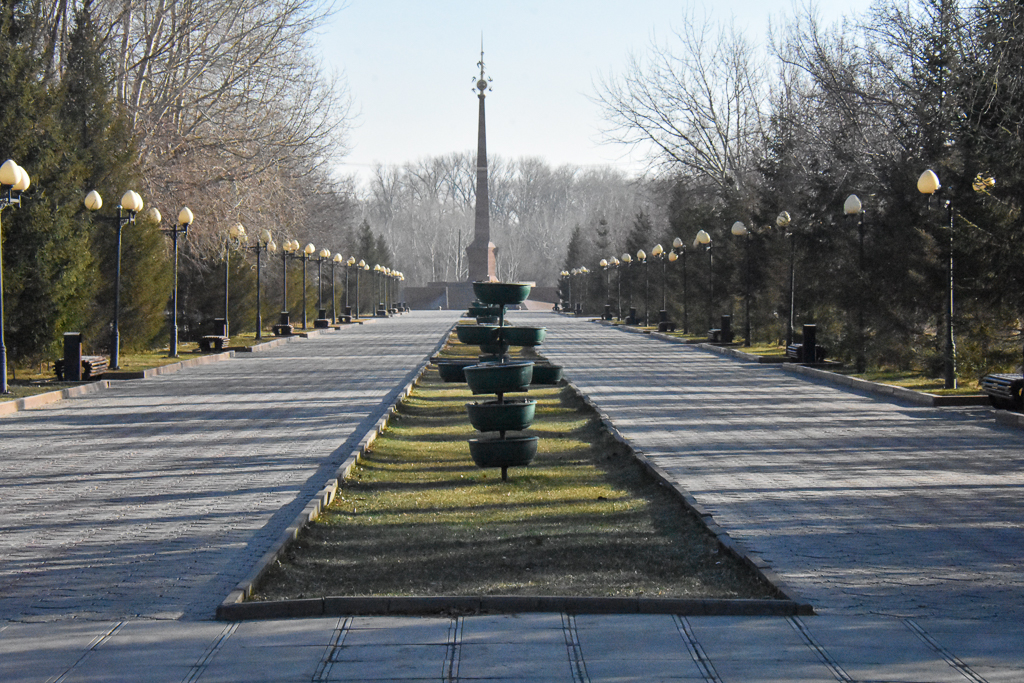
Monument to victims of radiation
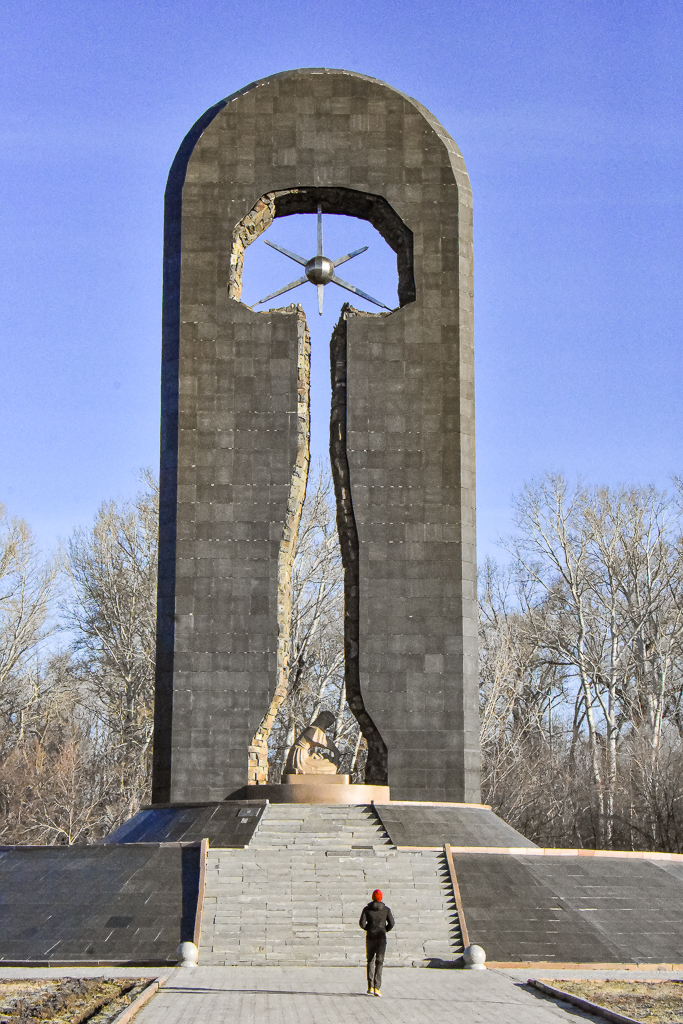
Monument to victims of radiation
Polygon
The next day we drove100 miles or so into the vast expanse of the polygon on flat dirt roads that appeared to be entering virgin grasslands, but the area was anything but virgin. The hidden specter of radiation was always present, and levels varied depending on which areas received the most nuclear bombs. The region is a maze of dirt roads dotted with small rural impoverished looking villages of wooden decrepit cottages. Villagers raise horse or cow in the radioactive grasslands. Also in the polygon, we saw large coal mining trucks hauling out coal from an open pit mine.
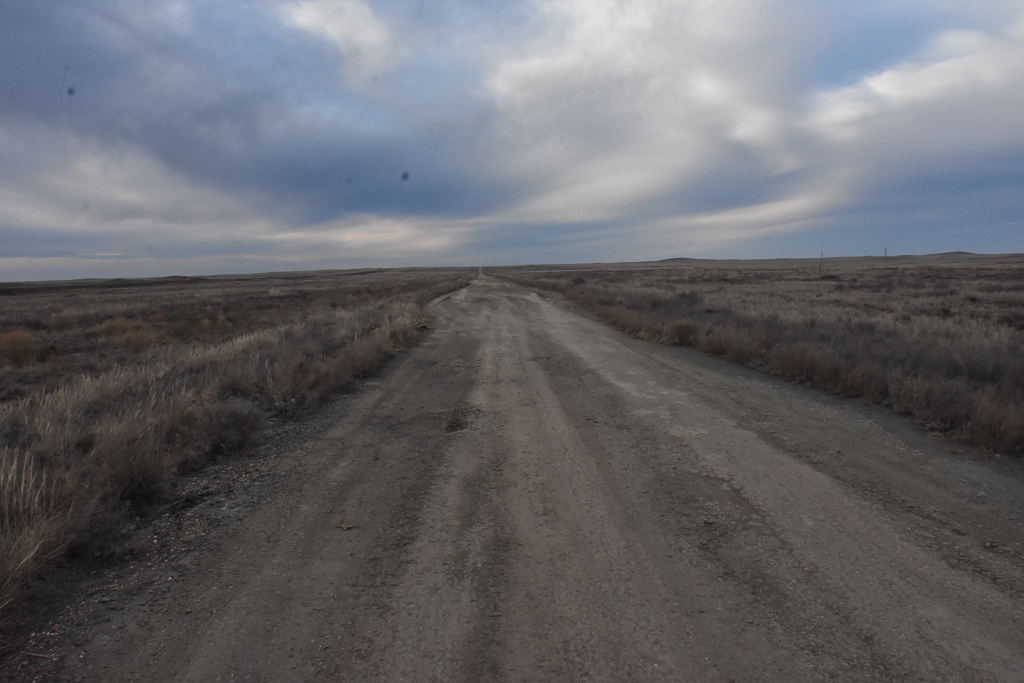
Road into Polygon
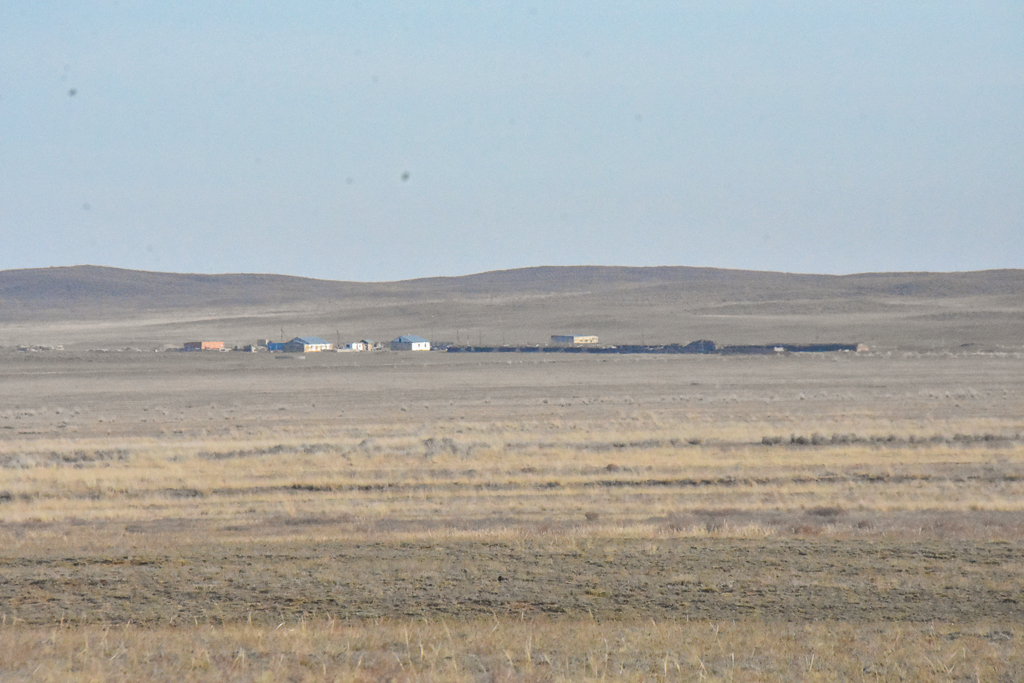
Village in Polygon
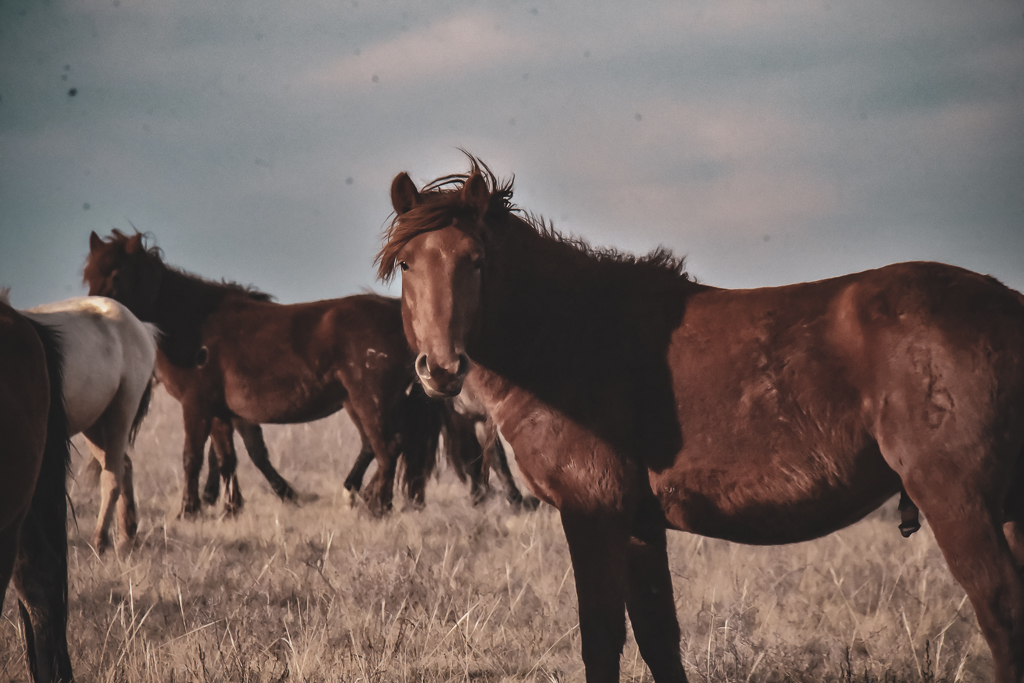
Grazing horses in radiactive grasslands
As we approached a lake formed by the detonation of a large nuclear bomb, the radiation levels skyrocketed and to protect ourselves we donned suits and masks to keep the radioactive dust off of us. The area had a dystopian wasteland feel to it. Yet there was a certain beauty to its quiet desolation. We were very careful and weary of getting radioactive dust on us. Despite all the pre-cautions we took, we saw some local villagers fishing in the lake with absolutely no care in the world about the radiation.

Frank in his suit
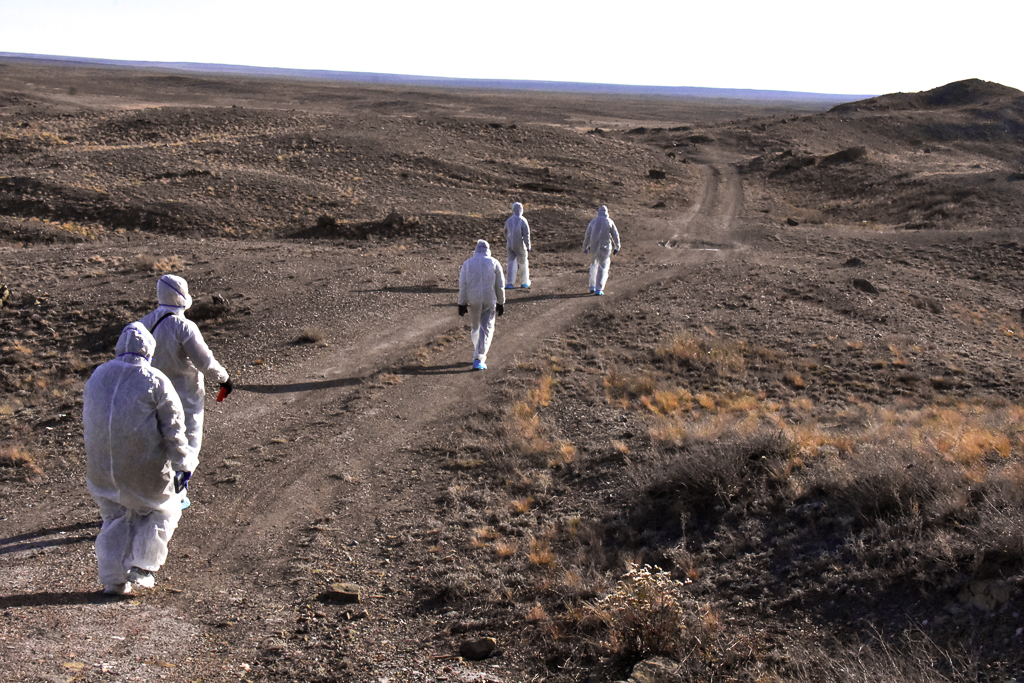
In our hazmat suits and masks to keep dust laden with radiation off of ourselves and from being inhaled
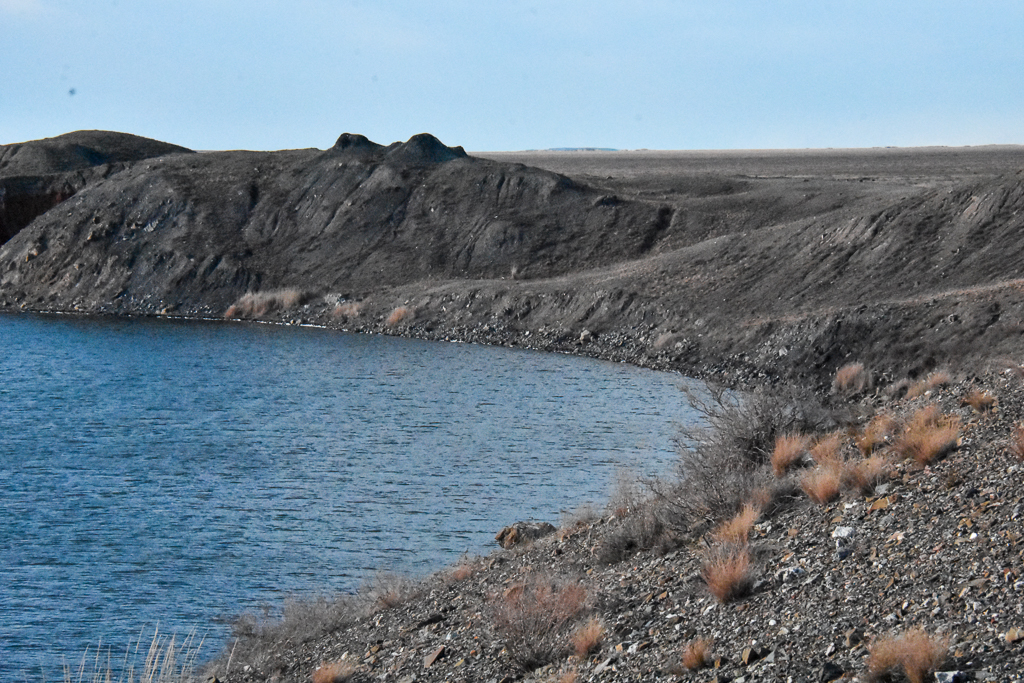
Lake formed by nuclear explosion

Me at Lake formed by nuclear explosion
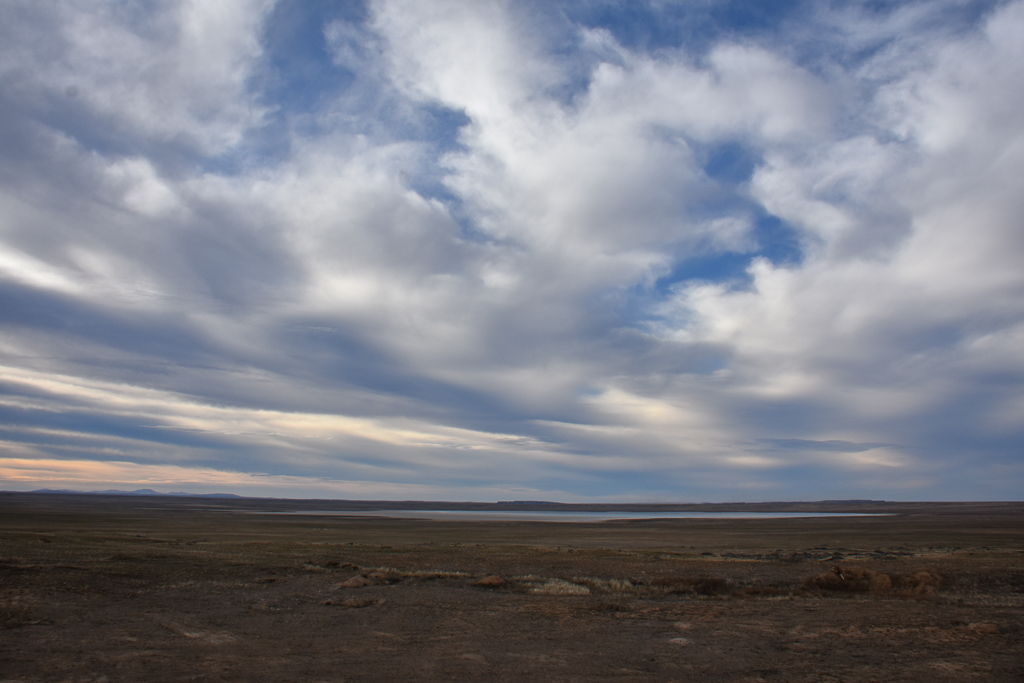
Polygon
Also near the nuclear testing grounds was maybe a giant concrete antenna and/or elevator shaft that was used to help detonate the bombs by Soviet military officials. Most of the metal has been claimed by scrap metal recyclers looking to cash in on the high cost of metal.
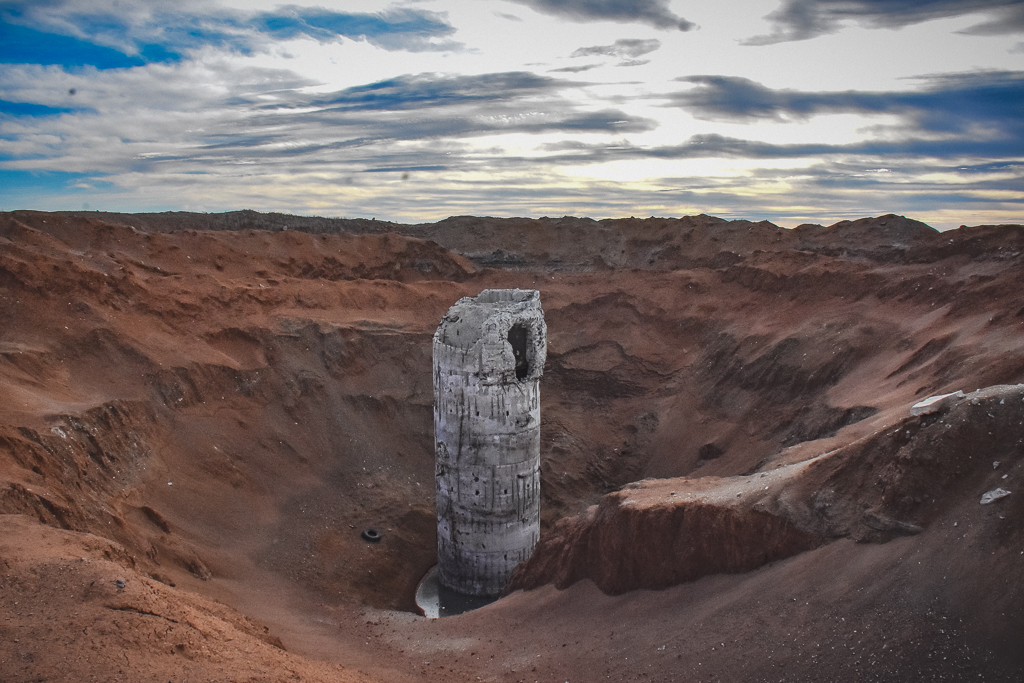
Concrete embedded antenna/elevator shaft used to detonate nukes
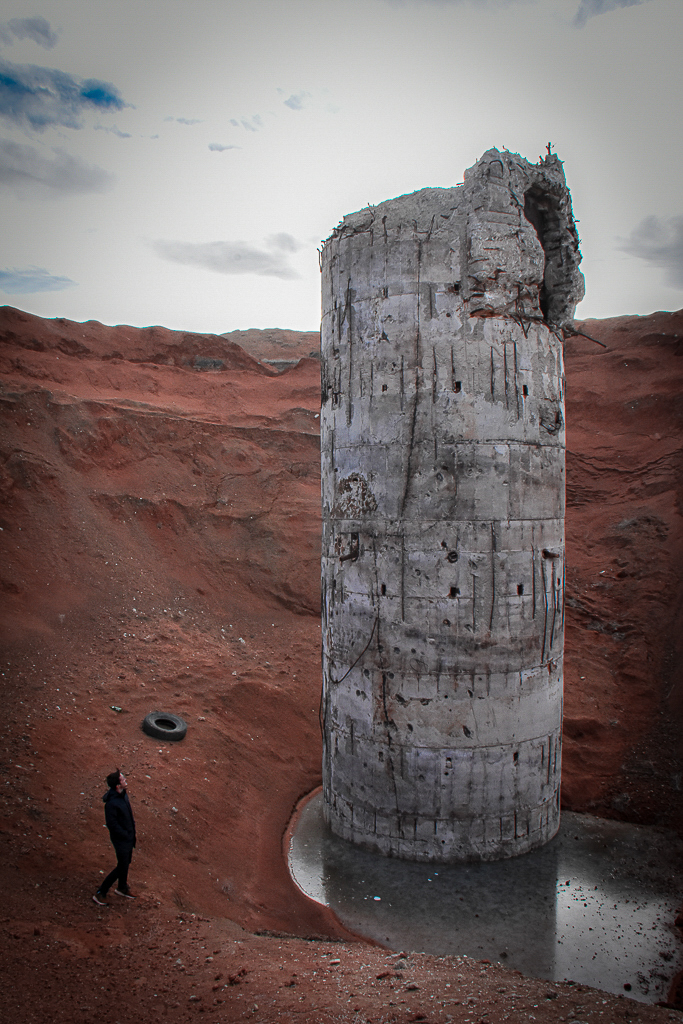
Concrete embedded antenna/elevator shaft used to detonate nukes
We also stopped at an underground concrete bunker where military officials detonated the nukes. Most of the tunnels have long caved in but there was a huge underground room to explore. I read that when Kazakh and American officials first inspected the area in 1991 after the fall of the Soviet Union, abando9ned fission materials had been found by looters in these bunkers.
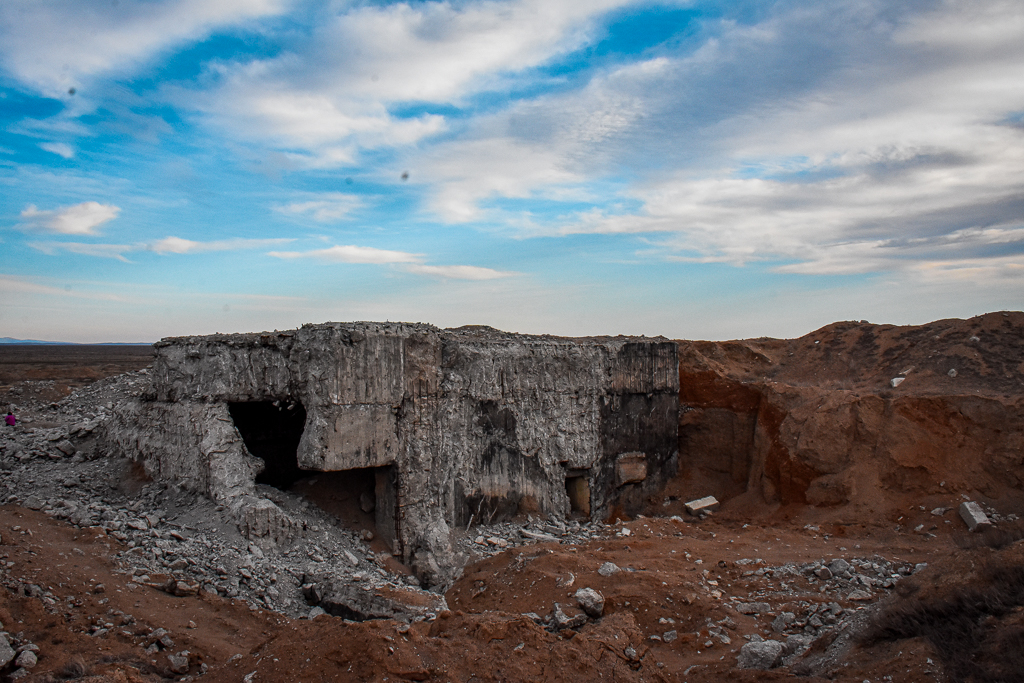
Concrete bunker
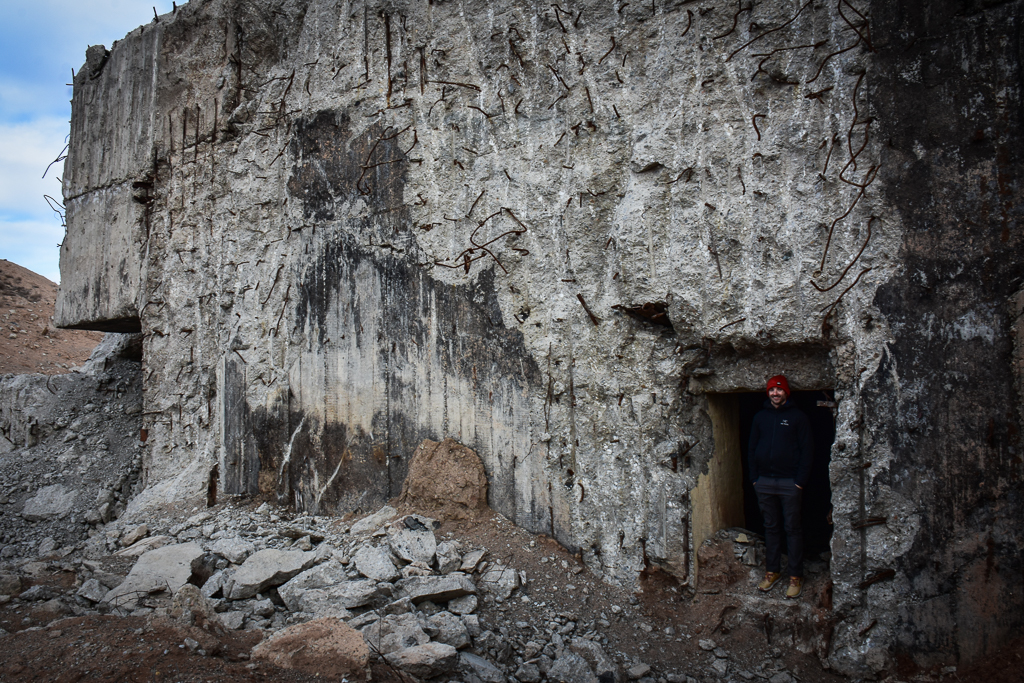
Concrete bunker
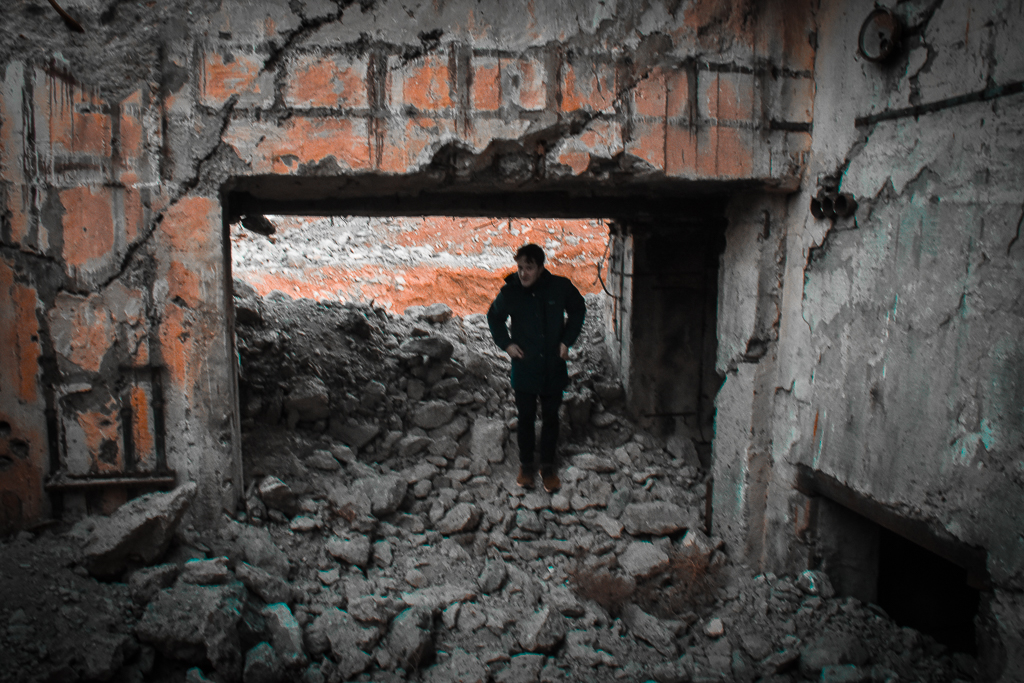
Concrete bunker

Concrete bunker
Kurchatov
We drove to Kurchatov, a small town built for nuclear scientists involved in the testing. The town was a mix of abandoned KGB buildings and modern-day apartment buildings where people live that still work conducting nuclear research. I could have spent days exploring this town. It was absolutely fascinating, and I loved that it was smaller and more relaxed than Simi.

Abandoned KGB Building

Abandoned KGB Building
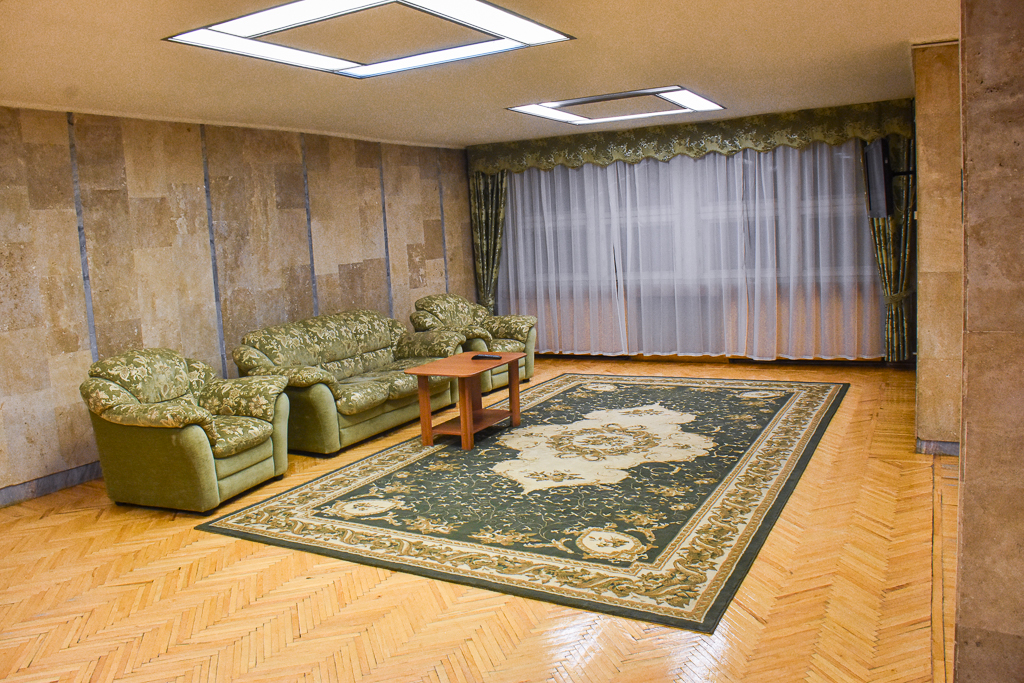
Our hotel which was and still is used by the world’s top nuclear physicists
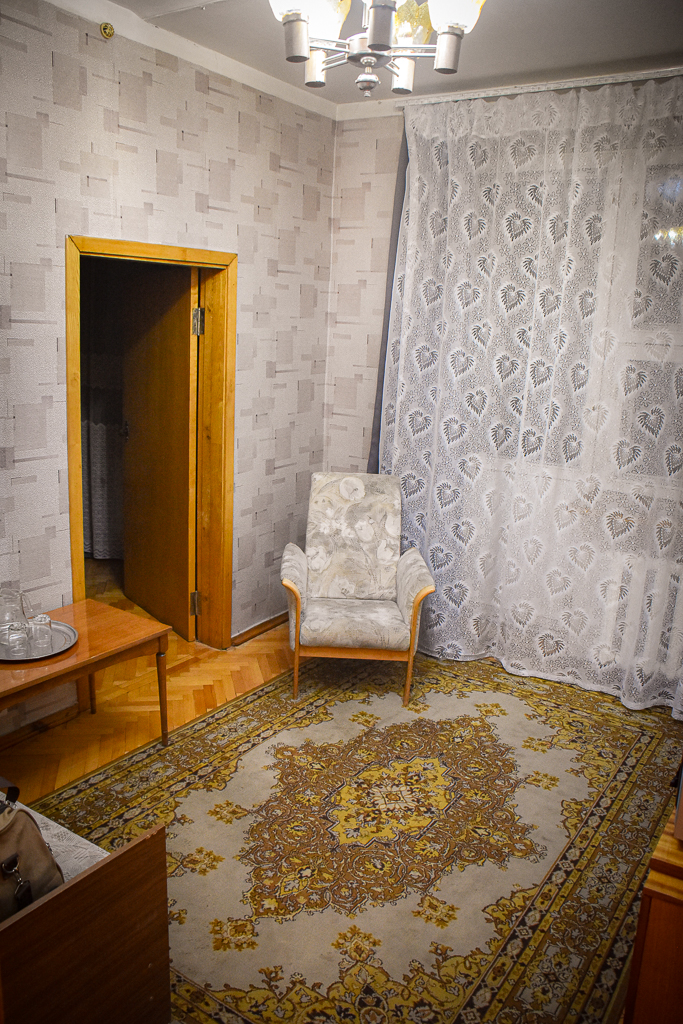
My hotel room, which was and still is used by the world’s top nuclear physicists
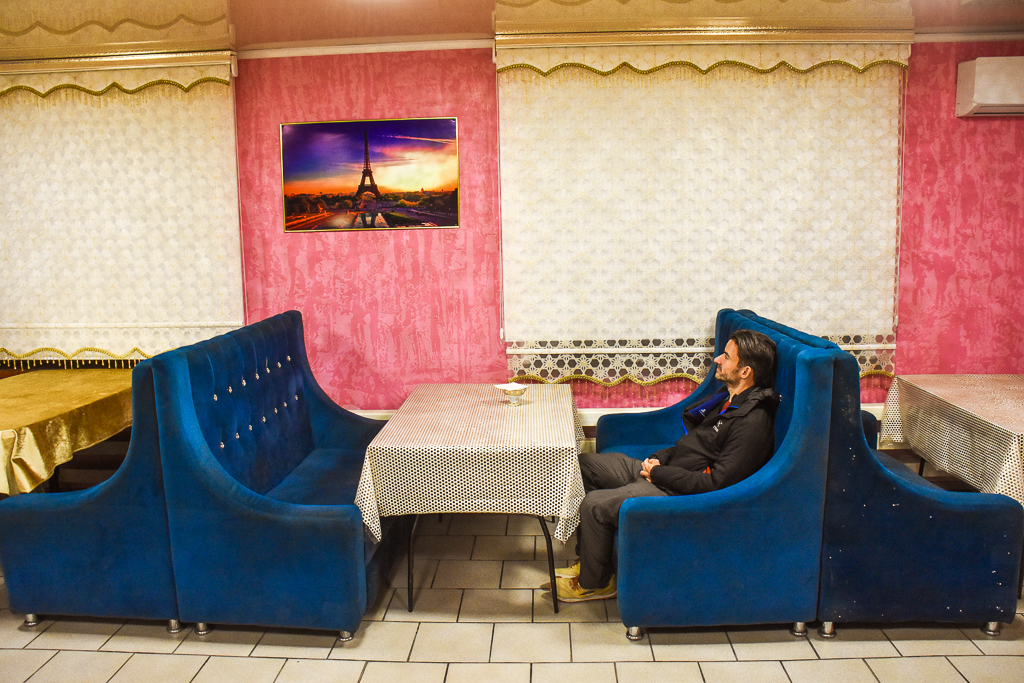
Frank at the restaraunt we had dinner at
Unfortunately, we had to cut our trip short and abort our visit to the abandoned Chagan Soviet air base. An ice storm hit the roads leading into Astana and officials closed down all the roads because of the risk. The next day forecasted more freezing rain and we had to return in order to catch our flight, so we decided to take the overnight sleeper train back to Astana which actually proved to be much more comfortable than driving. The train was 8 hours and took us right into Astana with no issues and on time, so we had all day to casually explore Astana.

My sleeper cabin which I shared with Frank and two kazakhs including one police woman with her uniform hanging upover her bed.
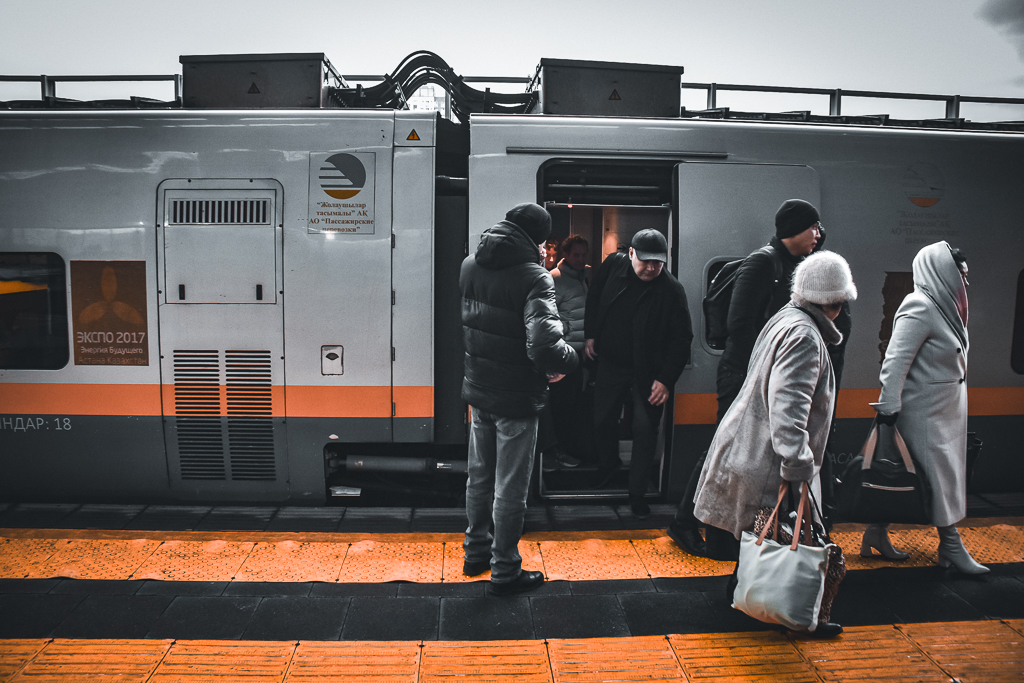
Night train
We managed to beat out the ice storm and return to Astana to the comfort of our hotel room in the Hilton as the ice and snow fell in blizzard like conditions. Later that night our Turkish Airlines fight miraculously arrived and departed on time back to Istanbul and onward to home.

